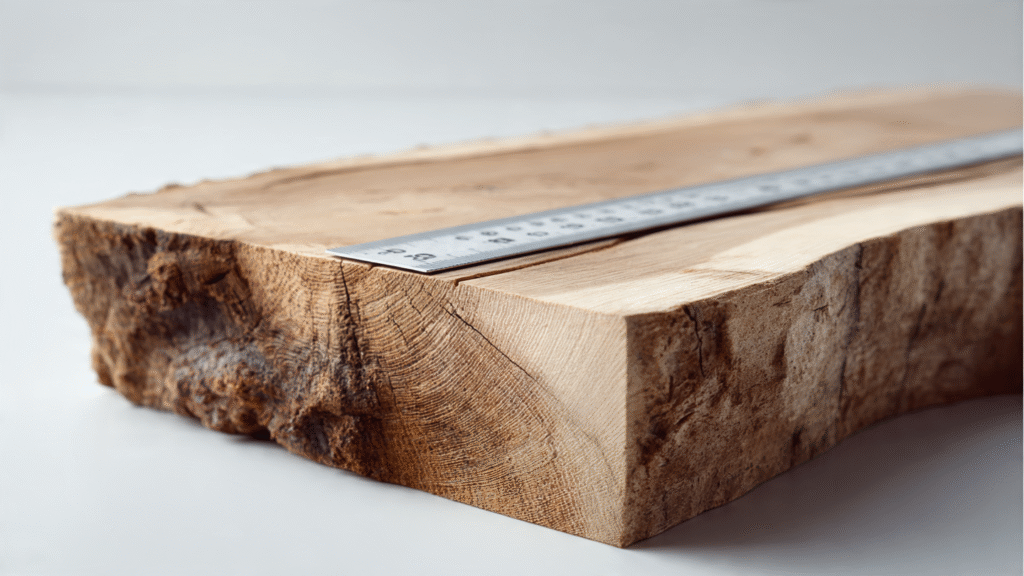Introduction
If you’ve ever stepped into a lumberyard or browsed wood suppliers online, you’ve likely encountered the term board feet. Unlike square footage, which measures area, board footage measures volume—a critical factor when buying lumber for woodworking, construction, or furniture making. Understanding how to calculate board feet ensures you purchase the right amount of wood, avoid overspending, and plan projects with precision.
In this guide, we’ll break down the board foot formula, explore conversion methods, and provide practical examples. Whether you’re a DIY woodworker, carpenter, or contractor, this article will help you master board foot calculations.
What is a Board Foot?
A board foot (BF) is a unit of measurement for lumber volume. By definition:
- 1 board foot = 144 cubic inches = 1/12 cubic foot
- Equivalent to a piece of wood measuring 12 inches long × 12 inches wide × 1 inch thick
This measurement is widely used in the United States and Canada for pricing hardwoods, softwoods, and rough lumber.
👉 For a detailed breakdown, check out Omni Calculator’s Board Foot Guide.
The Board Foot Formula
The standard formula is:
Board Feet = (Thickness (in) × Width (in) × Length (ft)) ÷ 12
Thickness: measured in inches
Width: measured in inches
Length: measured in feet
Example:
A board that is 2 inches thick, 6 inches wide, and 10 feet long:
(2×6×10)÷12=10 board feet(2 × 6 × 10) ÷ 12 = 10 \text{ board feet}
Step-by-Step Guide: How to Calculate Board Feet
- Measure the thickness in inches.
- Measure the width in inches.
- Measure the length in feet.
- Multiply thickness × width × length.
- Divide the result by 12.
👉 Try the Board Foot Calculator for quick results.
Board Feet vs. Square Feet
Many beginners confuse board feet with square feet.
- Square Foot (SF): Measures area (length × width).
- Board Foot (BF): Measures volume (length × width × thickness).
👉 Learn more at Board Feet to Square Feet Conversion.
Board Feet vs. Linear Feet
- Linear Foot (LF): A straight 12-inch measurement, regardless of width or thickness.
- Board Foot (BF): Accounts for thickness, width, and length.
👉 See conversion examples at Calcufacil Lumber Calculator.
Calculating Board Feet in Logs
When buying logs, sawmills often use log rules like the Doyle Rule or International ¼-inch Rule.
Formula (simplified): $(Diameter−44)2×Length=BoardFeet\left(\frac{Diameter – 4}{4}\right)^2 × Length = Board Feet$
👉 Explore log rules at Omni Calculator’s Log Rule Guide.
Converting Board Feet to Cubic Feet
Since 1 board foot = 1/12 cubic foot, you can easily convert:
- 12 board feet = 1 cubic foot
- 100 board feet = 8.33 cubic feet
👉 Use the Wood CFT Calculator for conversions.
Common Board Footage Examples
| Lumber Size | Length (ft) | Board Feet |
|---|---|---|
| 2×4 | 8 | 5.33 BF |
| 2×6 | 10 | 10 BF |
| 1×12 | 12 | 12 BF |
| 4×4 | 16 | 21.33 BF |
Rough Lumber vs. Finished Lumber
- Rough Lumber: Measured before planing; actual usable size may be smaller.
- Finished Lumber: Planed to standard dimensions (e.g., a 2×4 is actually 1.5×3.5 inches).
👉 Learn more at Catale Sawmill Rough Lumber Guide.
Practical Applications of Board Feet
- Furniture Making: Estimate wood for tables, chairs, and cabinets.
- Flooring: Convert square footage of a room into board feet.
- Construction: Calculate framing lumber needs.
- Pricing: Multiply board feet by cost per BF to get total price.
FAQs
How do you calculate board feet in a 2×4?
A 2×4 that is 8 feet long = (2 × 4 × 8) ÷ 12 = 5.33 board feet.
How many board feet are in a cubic foot?
12 board feet = 1 cubic foot.
What’s the difference between board feet and linear feet?
Board feet measure volume, while linear feet measure length.
How do you calculate board feet in a log?
Use the Doyle Rule or International ¼-inch Rule tables.
Why is board footage important in woodworking?
It ensures accurate pricing, planning, and material estimation.
Conclusion
Mastering how to calculate board feet is essential for anyone working with lumber. By using the board foot formula, understanding conversions, and applying it to real-world projects, you’ll save money, reduce waste, and plan more effectively.
